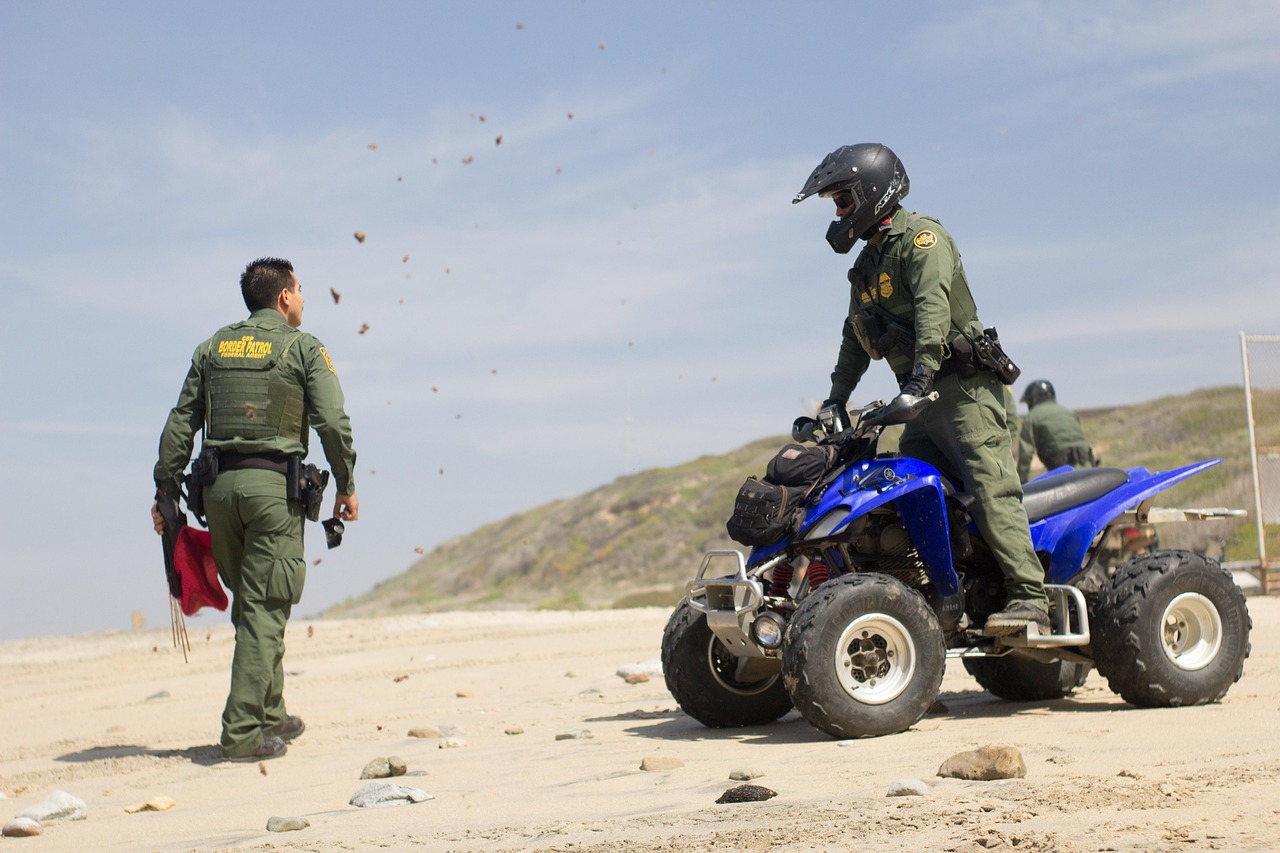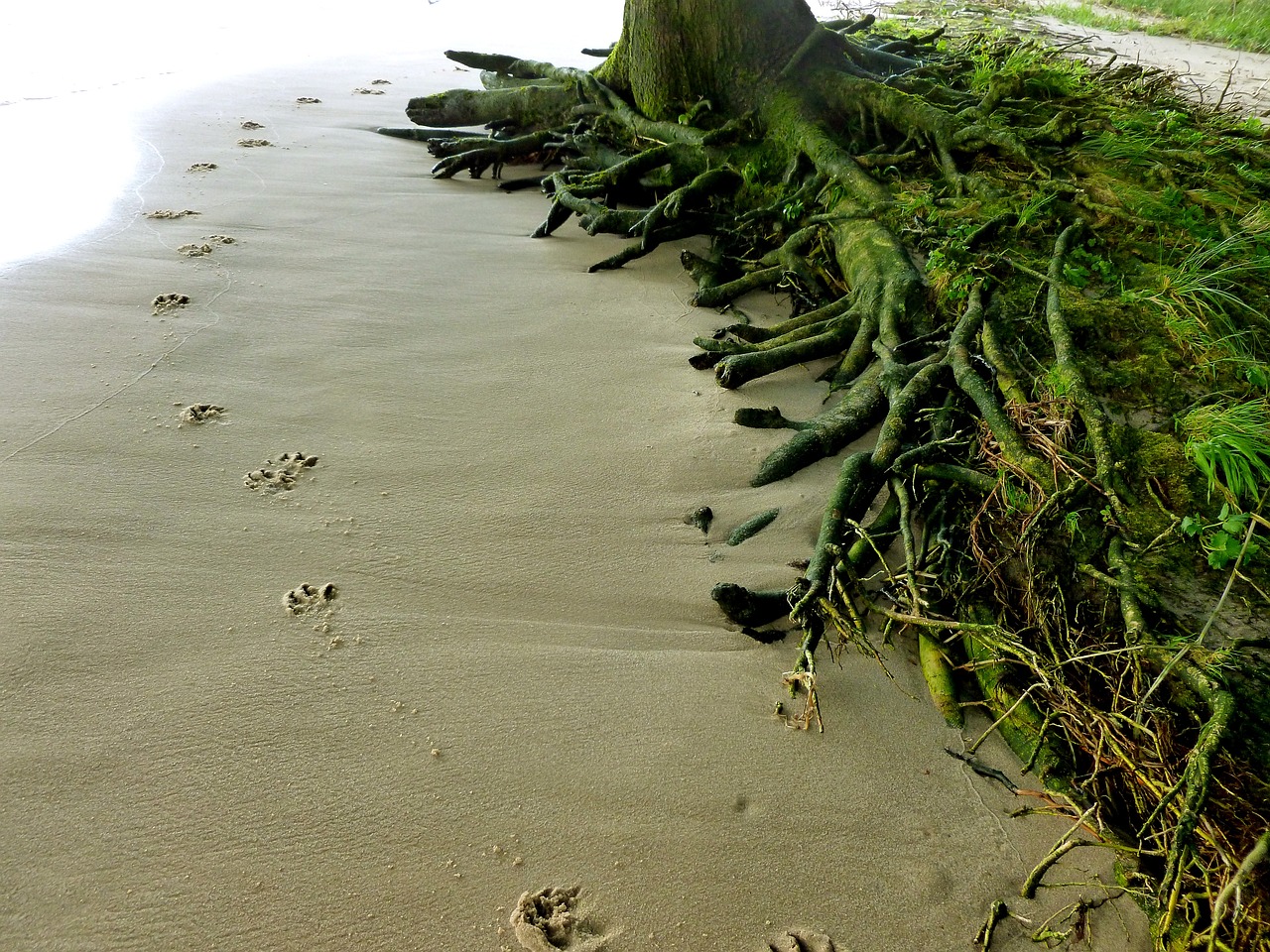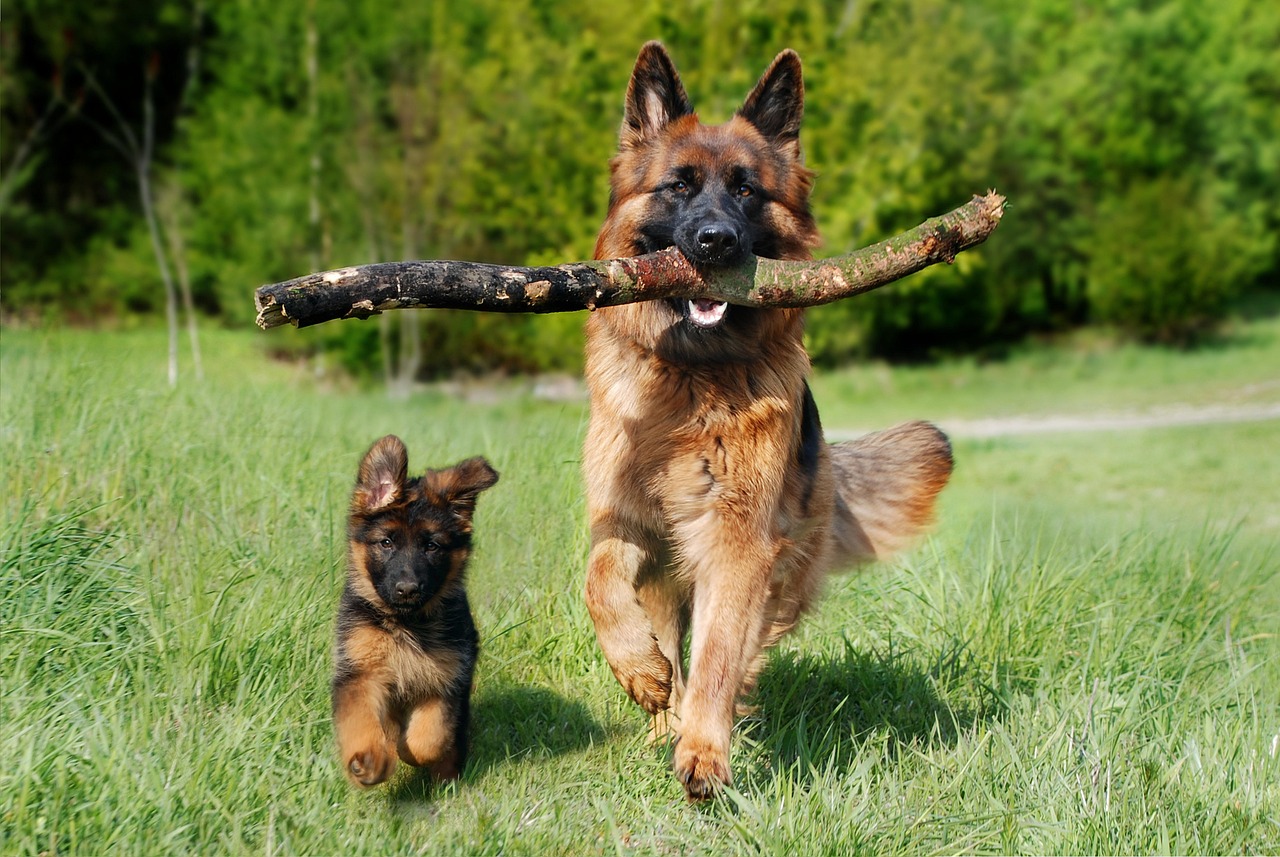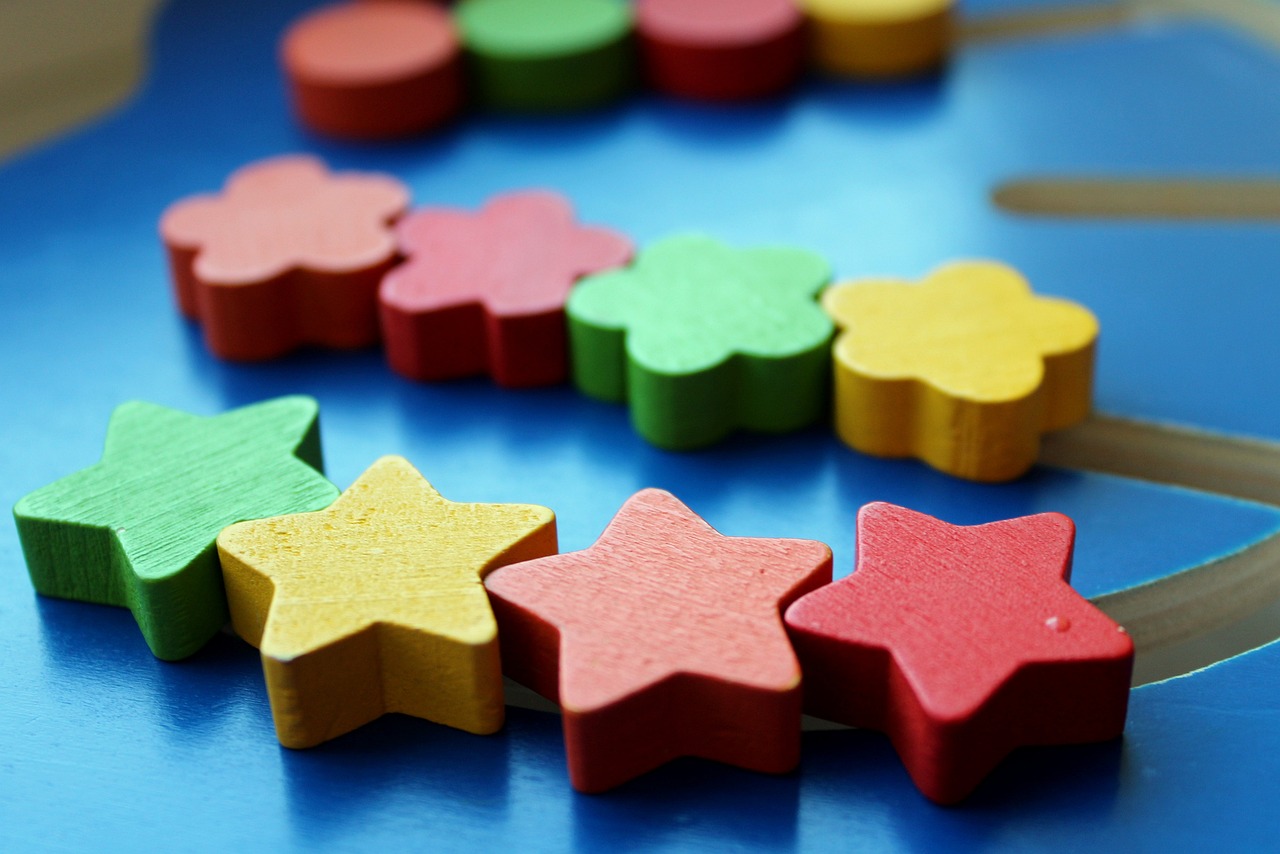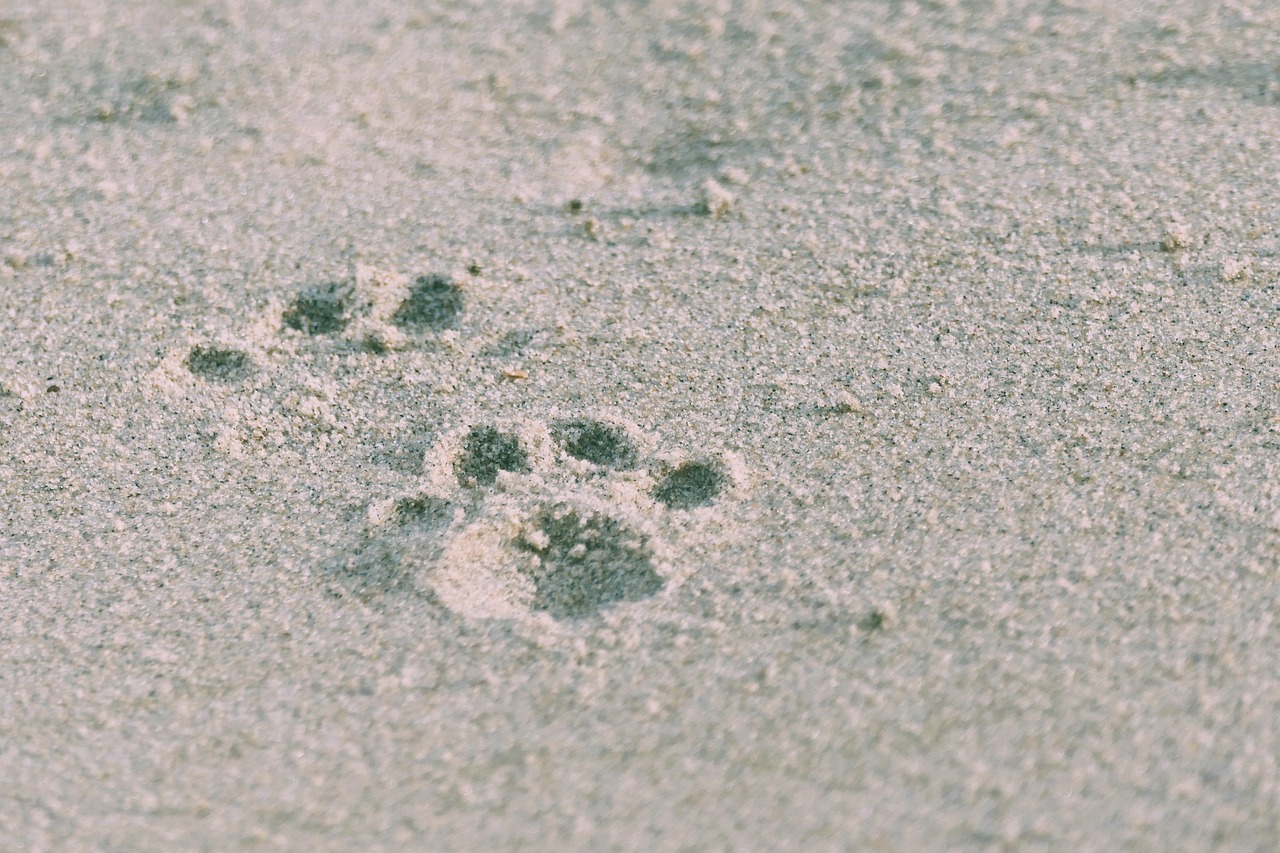This article explores how the beloved character Rocky from Paw Patrol can be used to teach children about recycling and sustainability, providing fun activities and insights for parents and educators.
Why Recycling is Important for Kids
Understanding the significance of recycling helps children grasp their role in environmental conservation. It fosters a sense of responsibility and encourages sustainable habits from a young age. By learning about recycling, children can develop a deeper connection with nature and understand the impact of their actions on the planet.
Who is Rocky from Paw Patrol?
Rocky, the eco-friendly pup from Paw Patrol, serves as an engaging character to introduce children to recycling concepts. His passion for the environment makes learning about sustainability fun and relatable. He teaches kids that being environmentally conscious can be exciting and rewarding.
Rocky’s Role in Paw Patrol
Known for his resourcefulness and creativity, Rocky often uses recycled materials to solve problems. His adventures can inspire kids to think critically about waste and resource management. For instance, when Rocky builds something new from old items, he demonstrates how recycling can lead to innovation.
Rocky’s Eco-Friendly Attitude
Rocky embodies a positive attitude toward the environment, showcasing how small actions can lead to significant changes. His character encourages kids to adopt eco-friendly practices in their daily lives, such as reducing waste and reusing materials. This attitude can instill lifelong habits in young viewers.
Lessons from Rocky’s Adventures
Each episode featuring Rocky presents opportunities to discuss environmental issues. These stories make it easier for kids to understand the importance of recycling and conservation through entertaining storytelling. Parents can leverage these narratives to initiate conversations about real-world environmental challenges.
Engaging Activities Inspired by Rocky
Parents and educators can create hands-on activities that mirror Rocky’s adventures, allowing children to learn about recycling while having fun and being creative. Here are a few ideas:
- DIY Recycled Art Projects: Creating art from recycled materials not only sparks creativity but also teaches children about reusing items that would otherwise go to waste. This hands-on approach makes recycling tangible.
- Building a Mini Recycling Center: Setting up a mini recycling center at home can help children learn how to sort waste properly. It provides a visual and practical way for them to engage with recycling.
How to Use Paw Patrol Episodes for Learning
Paw Patrol episodes featuring Rocky can be used as teaching tools. Discussing the themes and lessons from these episodes can enhance children’s understanding of sustainability. Parents can ask open-ended questions after watching to deepen comprehension.
Discussion Questions for Parents
After viewing an episode, parents might ask:
- What did Rocky do to help the environment?
- How can we apply Rocky’s lessons in our own lives?
Creating a Paw Patrol-Themed Recycling Challenge
Organizing a Paw Patrol-themed recycling challenge can motivate kids to participate actively in recycling efforts. This fun competition promotes teamwork and awareness, turning learning into an enjoyable experience.
Resources for Teaching Kids About Sustainability
Numerous resources are available for parents and educators to further explore sustainability topics. These can supplement lessons learned from Rocky and Paw Patrol, including:
- Books and Online Materials: A variety of books and online materials can provide additional information on recycling and sustainability, offering parents tools to enhance their children’s learning experience.
- Community Programs and Workshops: Participating in local community programs and workshops can provide children with hands-on experiences in recycling and sustainability, reinforcing the lessons learned from Rocky and Paw Patrol.
By integrating Rocky’s adventures into educational activities, parents and educators can effectively teach children about recycling and sustainability. This approach not only makes learning enjoyable but also instills important values that will last a lifetime.
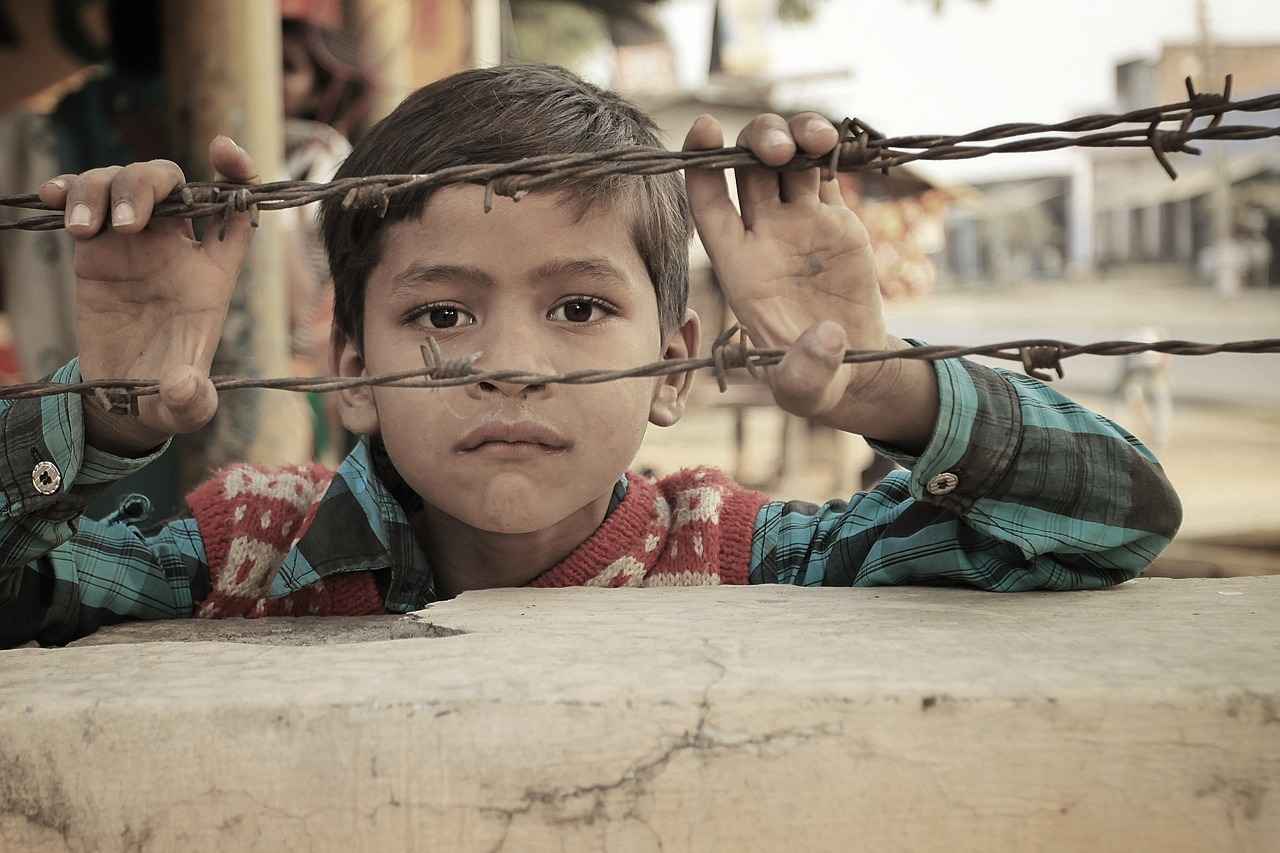
Why Recycling is Important for Kids
Understanding the importance of recycling is crucial for children as it lays the foundation for their role in environmental conservation. By grasping the concept of recycling, children not only learn about waste management but also develop a sense of responsibility towards the planet. This early education fosters sustainable habits that can last a lifetime.
When children engage in recycling activities, they become more aware of their surroundings and the impact of their actions on the environment. For instance, they learn that items such as plastic bottles, paper, and metal cans can be repurposed rather than discarded. This understanding encourages them to think critically about the materials they use and how they can minimize waste.
Moreover, teaching kids about recycling can enhance their problem-solving skills. As they participate in recycling projects, they often encounter challenges that require creative solutions. This not only boosts their confidence but also equips them with valuable skills for the future. For example, children might find innovative ways to reuse old materials in art projects, turning potential waste into something beautiful.
Incorporating recycling into daily routines can also lead to improved social awareness. Children who understand the significance of recycling are more likely to share this knowledge with their peers and family members. This ripple effect can create a culture of sustainability within communities, as children advocate for eco-friendly practices in their homes and schools.
Additionally, learning about recycling can be a fun and engaging experience. Hands-on activities such as creating art from recycled materials or setting up a mini recycling center at home can make the learning process enjoyable. These activities not only teach children about the importance of recycling but also allow them to express their creativity and individuality.
Furthermore, educational resources such as books, videos, and interactive games can complement recycling lessons. Parents and educators can utilize these tools to reinforce the concepts learned, making the experience more comprehensive. For example, watching shows that feature recycling themes, like episodes from Paw Patrol, can spark discussions about environmental responsibility.
As children grow, their understanding of recycling can evolve into a broader appreciation for sustainability. They begin to recognize the interconnectedness of various environmental issues, such as pollution, climate change, and conservation. This holistic perspective empowers them to become informed citizens who are capable of advocating for the environment.
- Fosters Responsibility: Children learn to take ownership of their actions.
- Enhances Problem-Solving Skills: Engaging in recycling projects encourages creativity.
- Promotes Social Awareness: Kids share their knowledge, influencing others.
- Makes Learning Fun: Hands-on activities keep children engaged.
- Encourages Holistic Understanding: Children grasp the bigger picture of sustainability.
In conclusion, understanding the significance of recycling is vital for children. It helps them recognize their role in protecting the environment and instills a sense of responsibility that can shape their future behaviors. By fostering sustainable habits from a young age, we can nurture a generation that values and actively contributes to environmental conservation.

Who is Rocky from Paw Patrol?
Rocky, the eco-friendly pup from Paw Patrol, is a character that captivates the hearts of children while introducing them to the vital concepts of recycling and sustainability. His vibrant personality and dedication to the environment make him a relatable figure for young audiences, transforming learning about sustainability into an enjoyable adventure.
As a member of the Paw Patrol, Rocky is not just a typical pup; he is characterized by his resourcefulness and creativity. He often uses recycled materials to solve problems, showcasing practical applications of recycling. This aspect of his character encourages kids to think critically about waste and resource management, inspiring them to find innovative solutions in their own lives.
Rocky’s Role in Paw Patrol
- Rocky is known for his ability to repurpose items, turning what might be considered trash into treasure.
- His adventures often revolve around environmental themes, making them perfect for discussions about conservation.
- Through his actions, Rocky teaches children that every small effort counts in making a difference.
Rocky’s Eco-Friendly Attitude
Rocky embodies a positive attitude toward the environment, demonstrating that simple actions can lead to significant changes. His character encourages kids to adopt eco-friendly practices in their daily lives, such as:
- Recycling paper, plastic, and glass.
- Reducing waste by reusing items.
- Participating in community clean-up events.
Lessons from Rocky’s Adventures
Each episode featuring Rocky presents opportunities to discuss environmental issues, making it easier for kids to understand the importance of recycling and conservation through entertaining storytelling. For example, when Rocky rescues a trapped animal using recycled materials, it highlights the practical benefits of reusing items.
Engaging Activities Inspired by Rocky
Parents and educators can create hands-on activities that mirror Rocky’s adventures, allowing children to learn about recycling while having fun. Here are a few ideas:
- DIY Recycled Art Projects: Encourage children to create art from recycled materials. This not only sparks creativity but also teaches them about reusing items that would otherwise go to waste.
- Building a Mini Recycling Center: Set up a mini recycling center at home to help children learn how to sort waste properly. This hands-on approach provides a visual and practical way for them to engage with recycling.
How to Use Paw Patrol Episodes for Learning
Paw Patrol episodes featuring Rocky can be used as effective teaching tools. Discussing the themes and lessons from these episodes can enhance children’s understanding of sustainability. After watching an episode, parents can ask open-ended questions to deepen comprehension of recycling concepts, such as:
- What did Rocky do to help the environment?
- How can we use what we have at home to help our planet?
Creating a Paw Patrol-Themed Recycling Challenge
To motivate kids to participate actively in recycling efforts, consider organizing a Paw Patrol-themed recycling challenge. This fun competition can promote teamwork and awareness while turning learning into an engaging experience.
Resources for Teaching Kids About Sustainability
Numerous resources are available for parents and educators to further explore sustainability topics. These can supplement lessons learned from Rocky and Paw Patrol, providing valuable tools for teaching:
- Books and Online Materials: A variety of books and online resources can enhance children’s learning experience about recycling and sustainability.
- Community Programs and Workshops: Participating in local community programs can provide children with hands-on experiences in recycling, reinforcing the lessons learned from Rocky.
In summary, Rocky from Paw Patrol serves as an engaging and educational character, making the concepts of recycling and sustainability accessible and fun for children. His adventures not only entertain but also inspire young minds to take action and contribute positively to their environment.
Rocky’s Role in Paw Patrol
Rocky, the resourceful pup from Paw Patrol, plays a crucial role in teaching children about the importance of recycling and sustainability. His character is not just entertaining; it serves as a powerful tool for instilling eco-friendly values in young minds. By showcasing how to creatively use recycled materials, Rocky inspires kids to think outside the box when it comes to solving problems.
Through his adventures, Rocky demonstrates that resourcefulness can lead to innovative solutions. For instance, he often repurposes everyday items, turning what might be considered trash into valuable tools or toys. This aspect of his character encourages children to view waste differently and consider how they can contribute to a cleaner environment.
Rocky’s adventures also highlight the significance of teamwork in addressing environmental issues. He collaborates with his fellow pups, showcasing that collective efforts can lead to impactful change. This not only teaches kids about the importance of collaboration but also emphasizes that everyone has a role to play in protecting our planet.
In each episode, Rocky’s enthusiasm for recycling is infectious. He often leads initiatives to clean up parks, promote recycling programs, or even build structures using recycled materials. These storylines provide excellent opportunities for parents and educators to engage children in discussions about waste management and sustainability.
Additionally, Rocky’s character embodies a positive attitude towards the environment. He shows that small actions, like picking up litter or using reusable bags, can make a significant difference. This message is vital for children as it fosters a sense of responsibility and encourages them to adopt eco-friendly practices in their daily lives.
One of the most effective ways to reinforce Rocky’s lessons is through interactive activities. Parents can create fun projects that mimic Rocky’s resourceful spirit, such as DIY crafts using recycled materials. Not only does this spark creativity, but it also makes the concept of recycling tangible and relatable.
Moreover, setting up a mini recycling center at home can provide a hands-on learning experience. Children can learn how to sort waste properly, making the recycling process more engaging. This practical approach helps solidify the lessons they learn from Rocky’s adventures.
To further enhance learning, parents can utilize Paw Patrol episodes featuring Rocky as educational tools. Discussing the themes and lessons from these episodes can deepen children’s understanding of sustainability. Open-ended questions can stimulate critical thinking and encourage kids to share their thoughts on environmental issues.
Creating a Paw Patrol-themed recycling challenge can also motivate children to actively participate in recycling efforts. This fun competition not only promotes teamwork but also raises awareness about the importance of sustainability in a playful manner.
In conclusion, Rocky from Paw Patrol serves as an excellent role model for teaching kids about recycling and sustainability. His resourcefulness, positive attitude, and teamwork spirit make learning about the environment engaging and fun. By incorporating Rocky’s lessons into everyday activities, parents and educators can inspire the next generation to become responsible stewards of our planet.
Rocky’s Eco-Friendly Attitude
Rocky, the resourceful pup from Paw Patrol, is not just a character; he is a beacon of environmental consciousness for children. His adventures are filled with lessons that emphasize the importance of adopting a positive attitude toward the environment. By showcasing how even the smallest actions can lead to significant changes, Rocky inspires kids to embrace eco-friendly practices in their daily lives.
The significance of Rocky’s character lies in his ability to make the concept of sustainability relatable and fun. Through his various escapades, children learn that recycling is not just a chore but an opportunity to be creative. For instance, when Rocky uses recycled materials to build gadgets or solve problems, he demonstrates that waste can be transformed into something useful. This approach not only engages children but also instills a sense of responsibility toward their surroundings.
One of the core messages Rocky conveys is that every little bit counts. Whether it’s picking up litter during a mission or sorting recyclables, his actions encourage kids to think about their everyday choices. Parents and educators can leverage these moments to discuss broader environmental issues, helping children understand their role in conservation. By integrating these lessons into daily conversations, adults can reinforce the importance of sustainability, making it a natural part of children’s lives.
Moreover, Rocky’s enthusiasm for the environment can spark curiosity. Kids often ask questions after watching Rocky’s episodes, such as, “Why is recycling important?” or “How can I help the planet?” These inquiries provide an excellent opportunity for parents to delve deeper into discussions about waste management and environmental protection. Engaging children in this way not only enhances their understanding but also empowers them to take action.
To further amplify Rocky’s eco-friendly message, parents can introduce fun activities inspired by his adventures. For example, creating a DIY recycling project at home can be a great way for kids to learn while having fun. Activities like making art from recycled materials or building a mini recycling center can turn learning into an enjoyable experience. Such hands-on projects not only teach practical skills but also reinforce the idea that recycling is a valuable and impactful practice.
In addition to activities, parents can utilize Paw Patrol episodes featuring Rocky as educational tools. After watching an episode, parents can ask open-ended questions to encourage critical thinking. Questions like, “What did Rocky do with the recycled materials?” or “How can we apply what Rocky did in our lives?” can help children connect the dots between entertainment and real-world application.
Furthermore, organizing a Paw Patrol-themed recycling challenge can motivate children to actively participate in recycling efforts. This friendly competition can foster teamwork and camaraderie, while also instilling a sense of achievement as kids contribute to a greater cause. By making recycling a fun and engaging activity, children are more likely to adopt these habits long-term.
In conclusion, Rocky’s character serves as a powerful tool for teaching children about sustainability. By embodying a positive attitude toward the environment, he encourages kids to think critically about their actions and their impact on the planet. Through engaging activities, discussions, and creative challenges, parents and educators can help instill a lifelong commitment to eco-friendly practices in children, ensuring that they grow up as responsible stewards of the Earth.
Lessons from Rocky’s Adventures
Each episode of Paw Patrol featuring Rocky offers a unique opportunity to delve into critical environmental issues. Through engaging storytelling, children are introduced to the concepts of recycling, conservation, and sustainability in a way that is both entertaining and educational. Rocky, the eco-friendly pup, serves as a relatable character who demonstrates the significance of taking care of our planet.
Rocky’s adventures often revolve around solving problems using recycled materials, showcasing how creativity can lead to innovative solutions. For instance, in one episode, Rocky transforms discarded items into useful tools, teaching kids that waste can be repurposed rather than thrown away. This not only highlights the importance of recycling but also encourages children to think outside the box when faced with challenges.
Moreover, Rocky’s passion for the environment is infectious. His character embodies a positive attitude towards sustainability, emphasizing that even small actions can lead to substantial changes. This message resonates with young viewers, instilling a sense of responsibility and encouraging them to adopt eco-friendly practices in their daily lives. By following Rocky’s example, children learn that they can make a difference, no matter how small their efforts may seem.
To further enhance the learning experience, parents and educators can create discussions around the themes presented in Rocky’s episodes. After watching an episode, parents can ask open-ended questions like, “What did Rocky do to help the environment?” or “How can we recycle at home like Rocky?” These questions encourage critical thinking and help children connect the stories to real-life applications.
Additionally, hands-on activities inspired by Rocky’s adventures can reinforce these lessons. For example, children can engage in DIY recycling projects, where they create art or useful items from materials that would otherwise be discarded. This not only sparks creativity but also makes the concept of recycling tangible and relatable.
Another engaging activity could be setting up a mini recycling center at home. This practical approach allows children to learn how to sort waste properly, giving them a visual understanding of recycling processes. By actively participating in recycling efforts, children can see firsthand the impact of their actions on the environment.
Furthermore, organizing a Paw Patrol-themed recycling challenge can motivate kids to get involved. This fun competition can encourage teamwork and foster a sense of community as children work together to collect and recycle materials. Such initiatives not only enhance their understanding of sustainability but also make learning enjoyable.
Incorporating Rocky’s lessons into daily life can significantly impact children’s attitudes toward the environment. By using the character’s adventures as a springboard for discussion and activity, parents and educators can cultivate a generation that values sustainability and understands the importance of recycling. This approach not only benefits the children but also contributes to a healthier planet for future generations.
In conclusion, Rocky’s adventures are more than just entertaining tales; they are powerful tools for teaching children about the vital issues surrounding recycling and sustainability. By engaging with these lessons, children can develop a strong foundation for eco-conscious living, ensuring they grow up to be responsible stewards of the environment.
Engaging Activities Inspired by Rocky
Engaging children in hands-on activities inspired by Rocky, the eco-friendly pup from Paw Patrol, is an excellent way to teach them about recycling and sustainability. These activities not only make learning fun but also instill a sense of responsibility towards the environment. Below are some creative and educational activities that parents and educators can implement to mirror Rocky’s adventures.
- Recycled Art Projects: Encourage children to create art using materials that would typically be thrown away, such as cardboard boxes, plastic bottles, and old newspapers. This activity can spark their creativity while teaching them the importance of reusing items. For example, children can make sculptures, collages, or even masks using these materials. Not only does this promote artistic expression, but it also reinforces the idea that waste can be transformed into something beautiful.
- Mini Recycling Center: Set up a mini recycling center at home or in the classroom. Provide separate bins for paper, plastic, and metal, and teach children how to sort their waste correctly. This hands-on approach makes recycling tangible and helps children understand the process of recycling. You can even turn it into a game where kids earn points for correctly sorting items, making it a fun and engaging learning experience.
- Rocky’s Recycling Challenge: Organize a recycling challenge inspired by Rocky’s adventures. Set a goal for the number of recyclable items each child can collect over a week. At the end of the challenge, celebrate their achievements with a small reward or recognition. This not only encourages children to actively participate in recycling but also fosters a sense of community and teamwork.
- Storytime with a Twist: Incorporate storytime sessions featuring Rocky’s episodes or books that focus on recycling and sustainability. After reading, engage children with questions about the story’s themes. For example, ask them how they can apply Rocky’s lessons in their daily lives. This encourages critical thinking and helps them relate the concepts to their own actions.
- DIY Bird Feeders: Teach children how to make bird feeders from recycled materials, such as empty milk cartons or toilet paper rolls. By decorating and filling these feeders with birdseed, children learn about reusing materials while also helping local wildlife. This activity connects them to nature and emphasizes the importance of caring for the environment.
- Garden Recycling Project: If space allows, start a small garden where children can compost organic waste. Teach them how to collect kitchen scraps like vegetable peels and fruit cores to create compost. This hands-on experience demonstrates how waste can be transformed into nutrient-rich soil, reinforcing the concept of recycling in a practical way.
These engaging activities not only reflect the spirit of Rocky’s adventures but also provide children with valuable lessons about sustainability. By participating in these hands-on projects, children can develop a deeper understanding of recycling and its importance in protecting our planet. Moreover, these activities promote creativity, teamwork, and critical thinking, making learning an enjoyable and enriching experience.

Simple Recycling Projects for Kids
In today’s world, it is crucial to instill a sense of responsibility towards the environment in our children. One effective way to achieve this is through simple recycling projects that can easily be incorporated into their daily routines. These projects not only teach practical skills but also emphasize the importance of sustainability in a fun and engaging manner.
Engaging children in recycling projects helps them understand their role in environmental conservation. By participating in these activities, children develop a sense of ownership and responsibility towards their surroundings. Moreover, these projects can cultivate sustainable habits that last a lifetime.
Hands-on activities, such as recycling projects, enhance learning by making it tangible. Children learn best when they can see the effects of their actions. For instance, creating something new from old materials not only sparks creativity but also teaches them about the value of reusing items that would otherwise contribute to waste.
- DIY Bird Feeders: Using empty plastic bottles, children can create bird feeders. This project teaches them about recycling while also promoting wildlife awareness.
- Recycled Planters: Old cans or containers can be transformed into colorful planters. Kids can paint and decorate them, learning about the importance of plants in our ecosystem.
- Upcycled Art Projects: Encourage creativity by having kids use scrap paper, cardboard, and other materials to create art. This not only fosters imagination but also reinforces the importance of reusing materials.
- Sorting Games: Create a fun game by using different bins for various recyclable materials. This helps children learn how to sort waste properly and understand what can be recycled.
To make recycling a habit, parents can integrate these projects into daily routines. For instance, setting aside time each week for a recycling craft can keep children engaged and excited about sustainability. Additionally, parents can lead by example by practicing recycling at home and involving their children in the process.
Establishing a mini recycling center at home can be an excellent way to teach children how to sort waste properly. By providing clearly labeled bins for paper, plastic, and metal, children can learn the importance of recycling in a practical setting. This visual aid reinforces the concept and makes it easier for them to engage with the process.
Parents and educators can enhance the recycling experience by utilizing various educational resources. Books, online materials, and community programs can provide valuable insights and additional activities that align with the theme of sustainability.
There are numerous books available that focus on recycling and sustainability. These resources can serve as excellent conversation starters and provide children with a deeper understanding of the subject. Websites dedicated to environmental education also offer a wealth of activities and information that can complement hands-on projects.
Participating in local community programs and workshops can further reinforce the lessons learned at home. Many communities offer events focused on sustainability, where children can engage in hands-on activities and learn from experts in the field. This not only broadens their understanding but also fosters a sense of community involvement.
In conclusion, incorporating simple recycling projects into children’s routines is a powerful way to teach them about sustainability. By making learning fun and interactive, we can instill a lifelong appreciation for the environment and the importance of recycling. Through engaging activities, children can develop practical skills while understanding their role in protecting our planet.
DIY Recycled Art Projects
Engaging children in is an excellent way to foster creativity while teaching them about the importance of sustainability. By transforming everyday waste into beautiful art, children can see firsthand how items that might otherwise end up in a landfill can be repurposed into something meaningful and fun.
These projects not only encourage creativity but also instill a sense of responsibility in children. They learn that their actions have consequences and that they can make a positive impact on the environment. Here are some fun and simple DIY recycled art projects that you can do with your children:
- Recycled Paper Mache: Use old newspapers and magazines to create paper mache sculptures. Mix flour and water to make a paste, and let the kids mold their creations. Once dry, they can paint and decorate them.
- Plastic Bottle Planters: Cut plastic bottles in half and transform them into planters. Kids can paint them in vibrant colors and plant flowers or herbs, learning about gardening and the life cycle of plants.
- Cardboard Box Creations: Gather old cardboard boxes and let children create anything from forts to robots. This project encourages imaginative play and demonstrates how versatile recycled materials can be.
- Bottle Cap Art: Collect bottle caps of various colors and sizes. Children can use them to create mosaics or pictures on cardboard. This project enhances fine motor skills and artistic expression.
- Egg Carton Animals: Use egg cartons to create fun animal figures. Kids can cut, paint, and add googly eyes to bring their creations to life, learning about different animals in the process.
Incorporating these recycled art projects into your child’s routine not only provides them with a sense of accomplishment but also reinforces the concept of reusing materials. It makes recycling tangible and enjoyable. As they engage in these activities, they develop critical thinking skills and learn to appreciate the value of resources.
Moreover, these projects can be a great opportunity for parents and educators to discuss broader environmental issues. For instance, while working on a cardboard box creation, you can talk about the importance of reducing waste and how recycling helps conserve natural resources.
Additionally, consider organizing an art show at home or in the classroom where children can display their recycled art. This can boost their confidence and provide a platform for them to share what they learned about recycling and sustainability with others.
Ultimately, DIY recycled art projects serve as a fun and educational way to engage children in sustainability. By allowing them to explore their creativity while understanding the importance of recycling, we are helping to cultivate environmentally conscious individuals who can contribute positively to the world around them.
Building a Mini Recycling Center
Creating a mini recycling center at home is an excellent way to engage children in the important practice of waste sorting and recycling. This hands-on approach not only teaches them about sustainability but also helps instill a sense of responsibility towards the environment. By setting up a designated space for recycling, children can visually grasp the concept of waste management while actively participating in it.
To begin, choose a suitable location in your home, such as a corner of the garage, a utility room, or even a part of the kitchen. Make sure this area is easily accessible so that children can interact with it regularly. Next, gather materials such as bins or containers that are clearly labeled for different types of waste, including:
- Plastic
- Paper
- Glass
- Organic waste
Labeling the bins with colorful signs or images can make it easier for younger children to understand what goes where. This visual aid is crucial as it simplifies the sorting process and reinforces learning through repetition.
Incorporating fun activities can further enhance the learning experience. For example, you can organize a waste sorting game where children race against each other to correctly sort items into the appropriate bins. This not only makes sorting fun but also encourages teamwork and friendly competition.
Another engaging idea is to create a recycling chart that tracks the amount of waste sorted correctly over a week or month. Celebrate milestones with small rewards or recognition to keep children motivated. This tangible progress can foster a sense of accomplishment and pride in their efforts to contribute to sustainability.
To deepen their understanding, you might include discussions about the recycling process and its benefits. Explain how recycling conserves natural resources, reduces landfill waste, and decreases pollution. Using age-appropriate language, you can highlight how their small actions can lead to significant environmental changes.
Moreover, consider integrating lessons from popular shows like Paw Patrol. Discuss how characters like Rocky advocate for recycling and environmental care. Watching episodes together can provide a fun context for discussions about real-world recycling practices.
Finally, ensure that the mini recycling center is regularly maintained. Encourage children to keep the area tidy and to check the bins for overflow. This responsibility will help them understand the ongoing commitment required for effective recycling.
In conclusion, building a mini recycling center at home is a practical and engaging way to teach children about waste sorting and sustainability. By making the process interactive and fun, you can instill lifelong habits that contribute positively to the environment. With the right setup, children can learn valuable lessons about their impact on the planet while enjoying the process of recycling.

How to Use Paw Patrol Episodes for Learning
Paw Patrol is not just an entertaining children’s show; it also serves as an invaluable educational resource. The episodes featuring Rocky, the eco-conscious pup, can be particularly effective in teaching kids about sustainability and recycling. By discussing the lessons and themes presented in these episodes, parents and educators can enhance children’s understanding of their role in protecting the environment.
Rocky’s character is a fantastic gateway for introducing young viewers to the importance of recycling. Each episode showcases his adventures, where he often takes on the role of a problem-solver using recycled materials. This not only entertains but also imparts essential lessons about resourcefulness and environmental stewardship.
The storytelling aspect of Paw Patrol is crucial for capturing children’s attention. By framing environmental issues within exciting plots, children are more likely to engage with the content. For instance, when Rocky saves the day using recycled items, it illustrates the practical applications of recycling in a way that resonates with young minds.
After watching episodes featuring Rocky, parents can facilitate discussions by asking open-ended questions. Here are some examples:
- What did Rocky use to solve the problem in today’s episode?
- Why do you think recycling is important?
- Can you think of something you can recycle at home?
These questions encourage critical thinking and help children articulate their understanding of recycling concepts.
To reinforce the lessons learned from Rocky, parents and educators can create engaging activities:
- DIY Recycling Crafts: Encourage children to create art from recyclable materials. This hands-on approach not only fosters creativity but also emphasizes the value of reusing items.
- Sorting Games: Set up a mini recycling center at home where children can practice sorting different types of waste. This visual and practical activity helps solidify their understanding of proper recycling practices.
To make learning fun, consider organizing a Paw Patrol-themed recycling challenge. This can be a friendly competition where kids work in teams to collect and sort recyclable materials. Not only does this promote teamwork, but it also instills a sense of accomplishment as they contribute to sustainability efforts.
There are numerous online resources available that can supplement the lessons learned from Rocky’s episodes. Websites dedicated to environmental education often provide interactive activities, videos, and guides that can enhance children’s understanding of sustainability.
Engaging with local community programs focused on recycling and sustainability can provide children with real-world experiences. Workshops often include hands-on activities that reinforce the lessons from Paw Patrol and help children connect with their community while learning about environmental responsibility.
In conclusion, utilizing Paw Patrol episodes featuring Rocky as educational tools can significantly enhance children’s understanding of sustainability. By integrating discussions, hands-on activities, and community involvement, parents and educators can create a rich learning environment that fosters a sense of responsibility towards the planet.
Discussion Questions for Parents
After watching episodes of Paw Patrol featuring Rocky, parents have a unique opportunity to engage their children in meaningful discussions about recycling and environmental responsibility. Asking open-ended questions can significantly enhance children’s comprehension of the concepts presented in the show, fostering a deeper understanding of how their actions impact the environment.
Open-ended questions encourage children to think critically and express their thoughts creatively. Instead of simple yes or no answers, these questions require children to elaborate on their ideas, thus promoting a more profound grasp of recycling principles. Here are some examples of effective discussion questions:
- What did you learn about recycling from Rocky’s adventures? This question allows children to reflect on the episode and articulate their understanding of recycling and its importance.
- Can you think of a time when you recycled something at home? What was it? By connecting the episode to their personal experiences, children can see the relevance of recycling in their daily lives.
- Why do you think Rocky cares so much about the environment? This question encourages children to empathize with Rocky’s character and consider the motivations behind caring for the planet.
- If you were to create a new recycling project, what would it be and why? This question stimulates creativity and allows children to brainstorm ways to contribute to sustainability.
- How can we make recycling more fun at home? This prompts children to think about engaging ways to incorporate recycling into their routines, fostering a proactive attitude toward sustainability.
In addition to these questions, parents can introduce fun activities that relate to the themes discussed. For instance, they can set up a mini recycling station at home, where children can practice sorting materials like paper, plastic, and metal. This hands-on experience reinforces the lessons learned from Rocky while making recycling a tangible part of their lives.
Moreover, parents should encourage their children to share their thoughts and ideas openly. This dialogue not only strengthens their comprehension of recycling concepts but also builds confidence in expressing their opinions. Children are more likely to internalize the values of sustainability when they actively participate in discussions and activities surrounding the topic.
By fostering an environment where open-ended questions are welcomed, parents can significantly enhance their children’s understanding of recycling and environmental issues. This approach not only deepens their comprehension but also encourages them to think critically about their role in protecting the planet.
In conclusion, engaging children in discussions after watching Rocky’s episodes from Paw Patrol can be a powerful tool for teaching them about recycling. Through open-ended questions, parents can guide their children toward a more profound understanding of sustainability, ultimately encouraging them to become responsible stewards of the environment.
Creating a Paw Patrol-Themed Recycling Challenge
Organizing a Paw Patrol-themed recycling challenge can be an exciting way to engage children in environmental stewardship. By incorporating elements from the popular animated series, parents and educators can create a fun and educational experience that encourages teamwork and enhances awareness of recycling practices.
The first step in creating this challenge is to set clear objectives. Determine what you want the children to learn about recycling, such as the importance of reducing waste, reusing materials, and the benefits of recycling. This will help guide the activities and make the learning goals more tangible.
Next, consider designing a scavenger hunt that revolves around finding recyclable items in the home or school environment. Children can team up as their favorite Paw Patrol characters, with each team assigned a specific color or theme related to recycling. For example, Team Rocky can focus on paper and cardboard, while Team Skye might tackle plastics. This not only makes the challenge more engaging but also fosters a sense of team spirit.
To further motivate participation, create a point system. Assign points for each item collected, with bonus points for unique finds or creative reuse ideas. At the end of the challenge, celebrate the efforts of all participants by recognizing individual contributions and teamwork. This can be done through certificates or small prizes, reinforcing the positive impact of their actions.
Incorporate educational moments throughout the challenge. For instance, after the scavenger hunt, gather the kids to discuss the items they found. Ask questions like, “Which items can be recycled?” and “How can we reduce waste in our daily lives?” This encourages critical thinking and helps solidify their understanding of recycling.
Another engaging activity is to have a recycled art competition. Encourage children to use the collected materials to create art pieces that reflect their favorite Paw Patrol adventures. This not only promotes creativity but also emphasizes the idea of reusing materials rather than throwing them away.
To keep the momentum going, consider implementing a weekly recycling routine. Set up a designated area for recyclable materials and encourage kids to contribute regularly. This can be a family project, where everyone participates in sorting and preparing items for recycling, reinforcing the habit of being environmentally conscious.
Utilizing Paw Patrol episodes as educational tools can also enhance the experience. After watching episodes featuring Rocky, engage the children in discussions about the environmental themes presented. This can help them connect the stories to real-life recycling practices.
Finally, share the success of the challenge with the broader community. Consider organizing a small event where children can showcase their art projects or share what they have learned about recycling. This not only highlights their achievements but also spreads awareness about the importance of sustainability.
By creating a Paw Patrol-themed recycling challenge, you can turn learning about recycling into an interactive and enjoyable experience. This approach not only motivates children to participate actively but also instills a lasting appreciation for environmental conservation.

Resources for Teaching Kids About Sustainability
In today’s world, teaching children about sustainability is more important than ever. With the increasing concern for the environment, parents and educators are seeking effective resources to instill eco-friendly values in young minds. Rocky from Paw Patrol serves as an excellent starting point for these discussions, but there are numerous other resources available to further explore sustainability topics.
Books are a fantastic way to introduce children to the concepts of recycling and sustainability. Here are some recommended titles:
- The Lorax by Dr. Seuss – This classic tale teaches children about the importance of trees and the consequences of environmental neglect.
- Why Should I Recycle? by Jen Green – This book provides a simple explanation of recycling and its benefits, making it accessible for younger readers.
- Compost Stew by Mary McKenna Siddals – A fun, rhyming guide to composting that encourages kids to think about waste reduction.
The internet offers a wealth of interactive resources that can make learning about sustainability engaging:
- National Geographic Kids – This site features games, videos, and articles about wildlife and conservation.
- Earth Rangers – A platform where children can learn about conservation efforts and participate in challenges to help the environment.
- EcoKids – An interactive site with activities, games, and educational resources focused on environmental issues.
Local community programs can provide hands-on experiences that reinforce lessons about sustainability:
- Recycling Workshops – Many communities offer workshops that teach children how to recycle properly and the importance of waste management.
- Gardening Programs – Engaging kids in gardening can teach them about composting and the importance of local food sources.
- Clean-Up Events – Participating in local clean-up events not only helps the environment but also instills a sense of community responsibility.
In our digital age, educational apps can be an effective way to teach sustainability:
- Green Kids – An app that provides fun facts and challenges related to environmental conservation.
- Waste Watcher – This app helps kids learn about waste management through interactive games and quizzes.
- Earth Hero – Kids can learn about environmental issues and track their eco-friendly actions through this engaging app.
Setting up a recycling station at home can be a practical way to teach children about waste management:
- Designate Bins – Use clearly labeled bins for paper, plastic, and metal to help children understand sorting.
- Involve Kids in the Process – Encourage children to participate in sorting and taking the recyclables to the curb.
- Track Progress – Create a chart to track how much waste is being recycled, fostering a sense of achievement.
By utilizing these resources, parents and educators can effectively teach children about sustainability and the importance of recycling. Engaging with books, online materials, community programs, and hands-on activities can help reinforce the lessons learned from characters like Rocky and make the topic of sustainability relatable and fun. The aim is to cultivate a generation that values and actively participates in environmental conservation.
Books and Online Materials
In today’s world, where environmental concerns are paramount, educating children about recycling and sustainability is essential. One effective way to enhance this learning experience is through books and online materials that provide valuable insights and practical tools. This section explores various resources that parents and educators can utilize to engage children in meaningful discussions about the environment.
There is a wealth of books available that cater to different age groups, making it easy for parents to find suitable reading material for their children. These books often feature captivating stories and colorful illustrations that not only entertain but also educate young readers about the importance of recycling.
- Picture Books: Titles like “The Lorax” by Dr. Seuss and “Michael Recycle” by Ellie Bethel introduce children to environmental themes in a fun and engaging way.
- Non-Fiction: Books such as “Recycle! A Handbook for Kids” by Gail Gibbons provide factual information about recycling processes and the impact of waste on the environment.
- Activity Books: Engaging books with hands-on projects, like “The Big Book of Recycled Crafts,” encourage children to create art and useful items from recycled materials.
Alongside traditional books, a variety of online resources can significantly enhance children’s understanding of sustainability. Websites dedicated to environmental education offer interactive content that makes learning enjoyable.
- Educational Websites: Sites like EPA’s Recycling Page provide comprehensive information on recycling practices and tips for kids.
- Interactive Games: Platforms such as National Geographic Kids offer games and quizzes that teach children about environmental conservation in an engaging manner.
- Videos and Documentaries: Streaming services often feature educational documentaries aimed at children, showcasing real-world recycling initiatives and their impact on the planet.
To maximize the benefits of these resources, parents can incorporate them into daily routines. For example, after reading a book about recycling, parents can initiate discussions about what the children learned and how they can apply these lessons in their lives. Additionally, parents can encourage children to participate in community recycling programs or local environmental events, reinforcing the concepts learned through reading and online exploration.
Furthermore, creating a reading corner at home filled with books about recycling and sustainability can inspire children to delve deeper into these topics. This dedicated space can serve as a hub for learning and creativity, where kids can explore various materials and engage in projects that promote eco-friendly practices.
In conclusion, the combination of books and online materials offers a robust foundation for teaching children about recycling and sustainability. By utilizing these resources, parents and educators can provide children with the knowledge and tools necessary to become responsible stewards of the environment, fostering a generation that values and actively participates in sustainable practices.
Community Programs and Workshops
Engaging children in community programs and workshops is an excellent way to instill a sense of responsibility towards the environment. These activities can provide hands-on experiences that reinforce the valuable lessons learned from characters like Rocky in Paw Patrol. By participating in local initiatives, children can see the direct impact of their efforts on sustainability and recycling.
Community programs and workshops are organized events where individuals come together to learn, share, and participate in various activities. These can range from recycling drives to educational seminars on sustainability practices. Such programs often focus on practical skills and knowledge that empower children to make a difference in their communities.
- Hands-on Learning: Children gain practical experience in recycling and sustainability, which helps solidify their understanding of these concepts.
- Social Interaction: Engaging with peers fosters teamwork and collaboration, essential skills for future endeavors.
- Community Awareness: Children learn about their local environment and the challenges it faces, cultivating a sense of belonging and responsibility.
- Fun and Creativity: Many workshops incorporate creative projects that make learning enjoyable and memorable.
There are various types of community programs that focus on sustainability and recycling:
- Recycling Workshops: These sessions teach children how to properly sort and recycle materials, emphasizing the importance of reducing waste.
- Gardening and Composting Classes: Workshops that focus on gardening can introduce kids to the concepts of composting and organic waste management.
- Art from Recyclables: Creative workshops that encourage children to make art from recycled materials can spark interest in reusing items.
- Environmental Clean-Up Events: Participating in clean-up drives allows children to see the immediate effects of pollution and the importance of keeping their environment clean.
Finding community programs and workshops is easier than ever. Here are some tips to locate suitable opportunities:
- Check Local Libraries: Many libraries host educational events focused on sustainability.
- Visit Community Centers: Community centers often have bulletin boards with information on upcoming workshops and initiatives.
- Online Resources: Websites like Eventbrite or local government sites frequently list community events.
- Social Media Groups: Joining local community groups on social media platforms can provide updates on environmental initiatives.
To maximize the benefits of these programs, parents can:
- Encourage Participation: Actively involve children in choosing which programs to attend based on their interests.
- Discuss Learnings: After attending a workshop, discuss with children what they learned and how they can apply it at home.
- Volunteer Together: Participating as a family can strengthen bonds and reinforce the importance of community service.
In conclusion, community programs and workshops provide invaluable opportunities for children to engage with recycling and sustainability in a meaningful way. By learning from their experiences, children can embody the lessons taught by Rocky and Paw Patrol, becoming proactive stewards of the environment.
Frequently Asked Questions
- How can Rocky from Paw Patrol help teach kids about recycling?
Rocky, the eco-friendly pup, provides a fun and relatable way for kids to learn about recycling. His adventures often revolve around resourcefulness and creativity, which can inspire children to think critically about waste and how they can contribute to environmental conservation.
- What are some simple recycling projects for kids?
There are plenty of engaging projects you can try! For instance, DIY recycled art projects allow kids to create beautiful crafts from materials that would otherwise be thrown away. Additionally, building a mini recycling center at home can teach them how to sort waste properly in a fun and interactive way.
- How can parents use Paw Patrol episodes for educational purposes?
Paw Patrol episodes featuring Rocky can be excellent teaching tools. After watching, parents can ask open-ended questions to encourage kids to discuss the themes of recycling and sustainability. This not only enhances their understanding but also promotes critical thinking about environmental issues.
- Are there resources available for teaching kids about sustainability?
Absolutely! There are numerous books and online materials that delve into recycling and sustainability topics. Additionally, participating in community programs and workshops can provide hands-on experiences that reinforce the lessons learned from Rocky and Paw Patrol.









